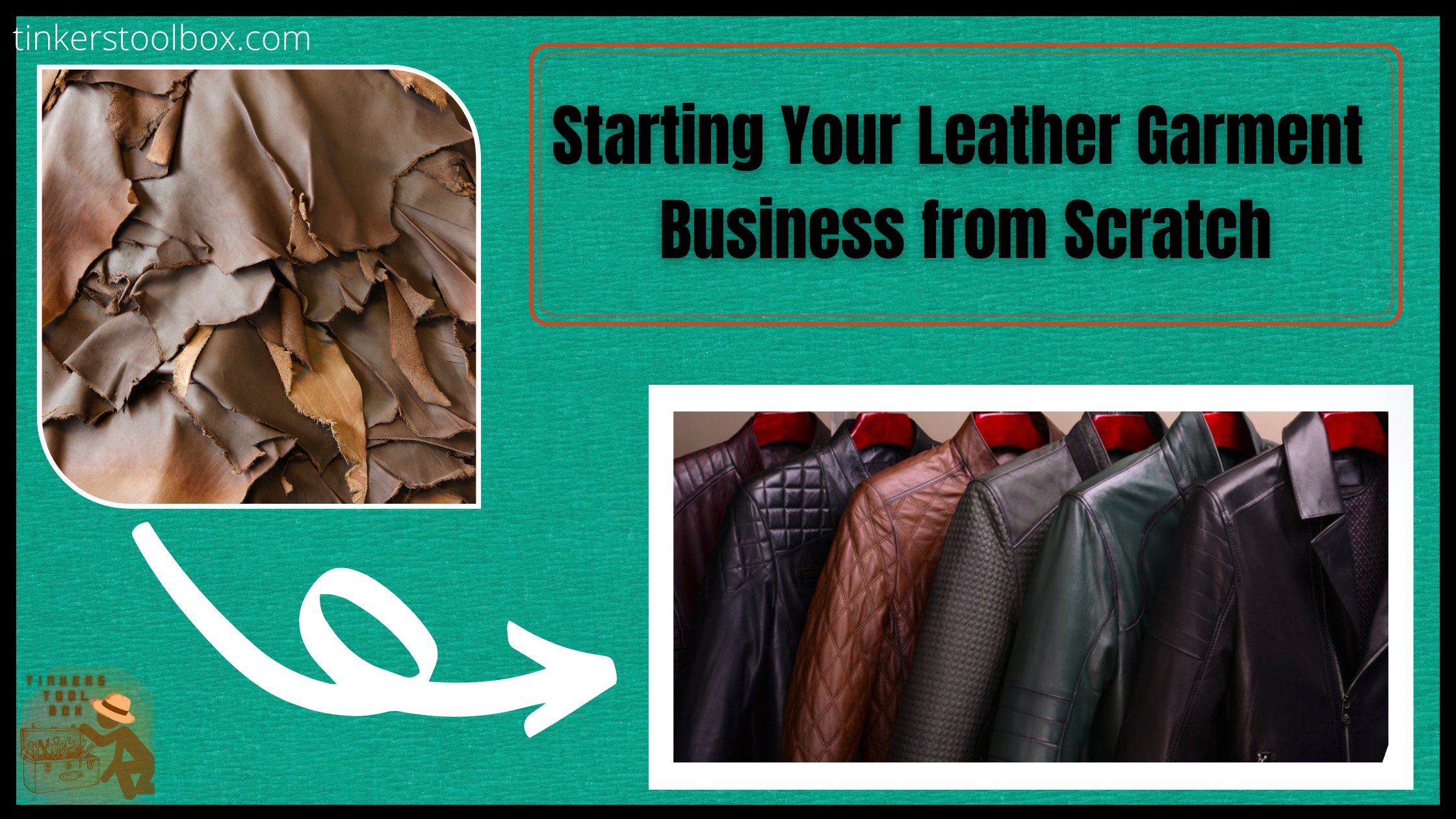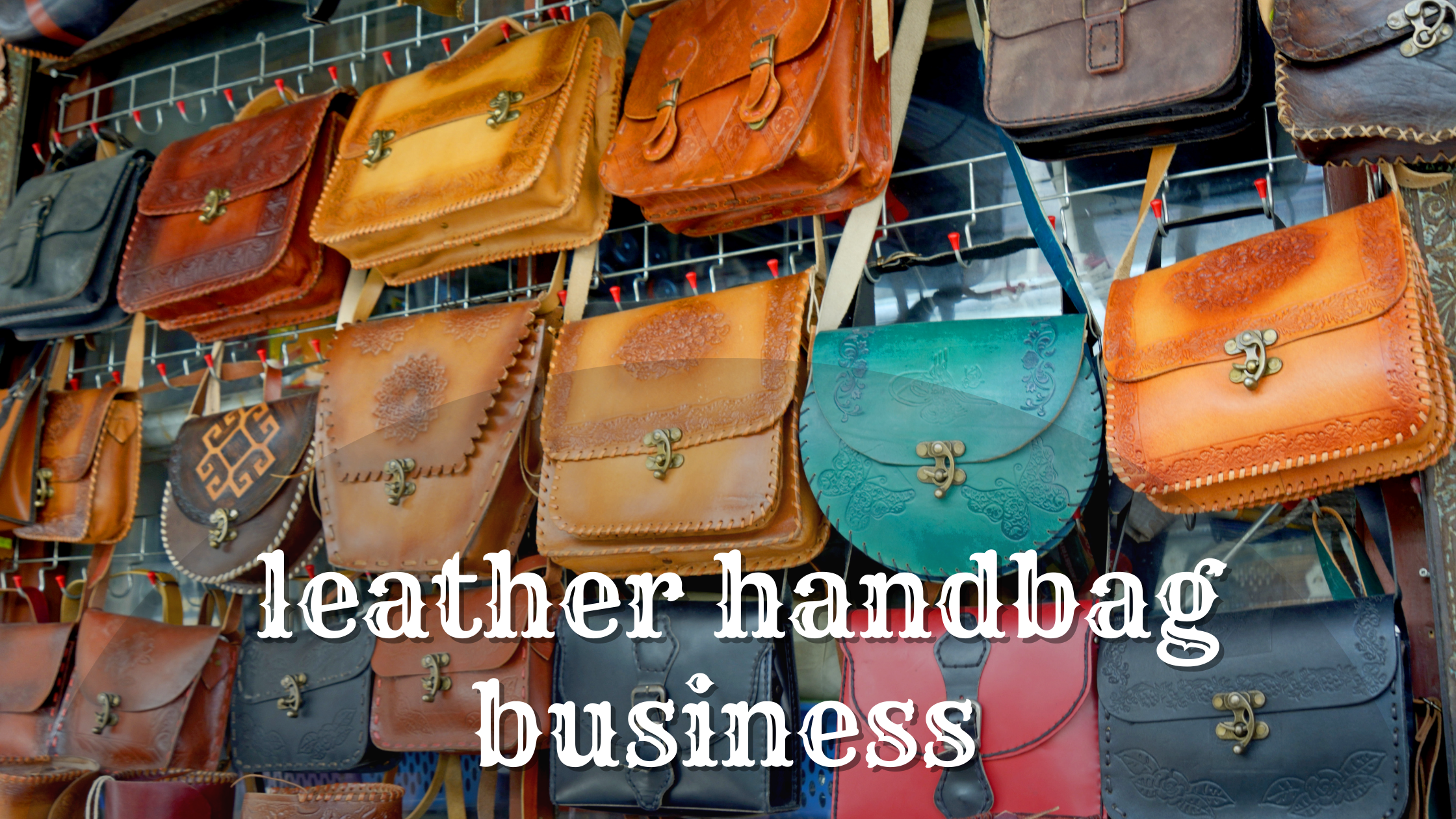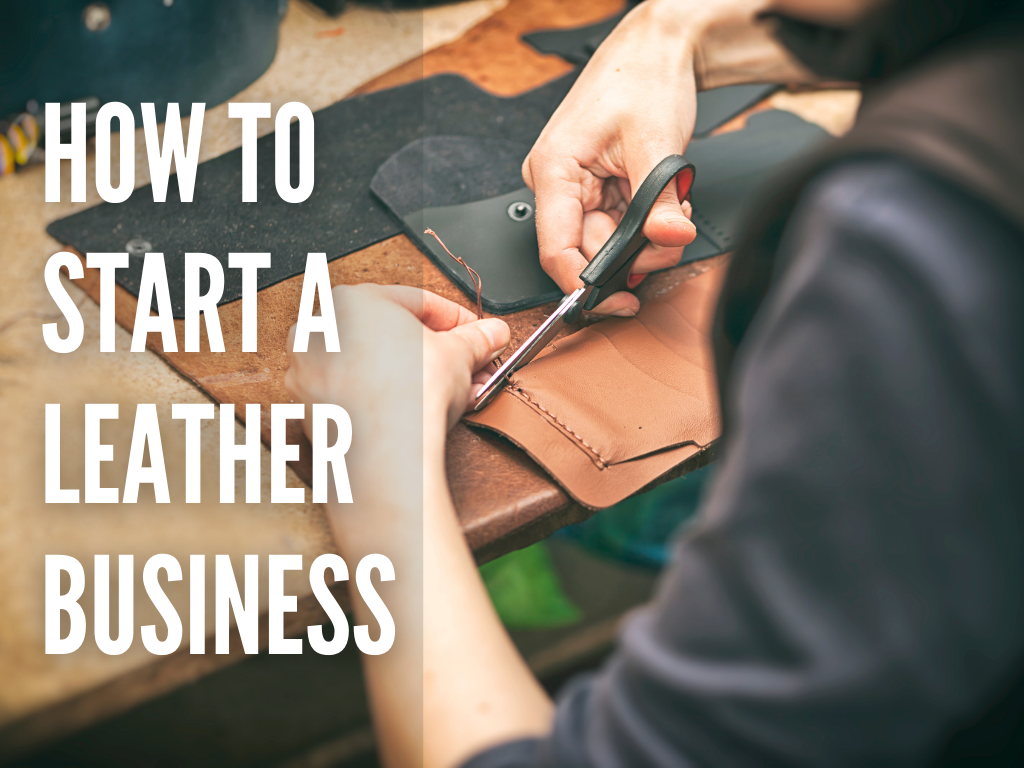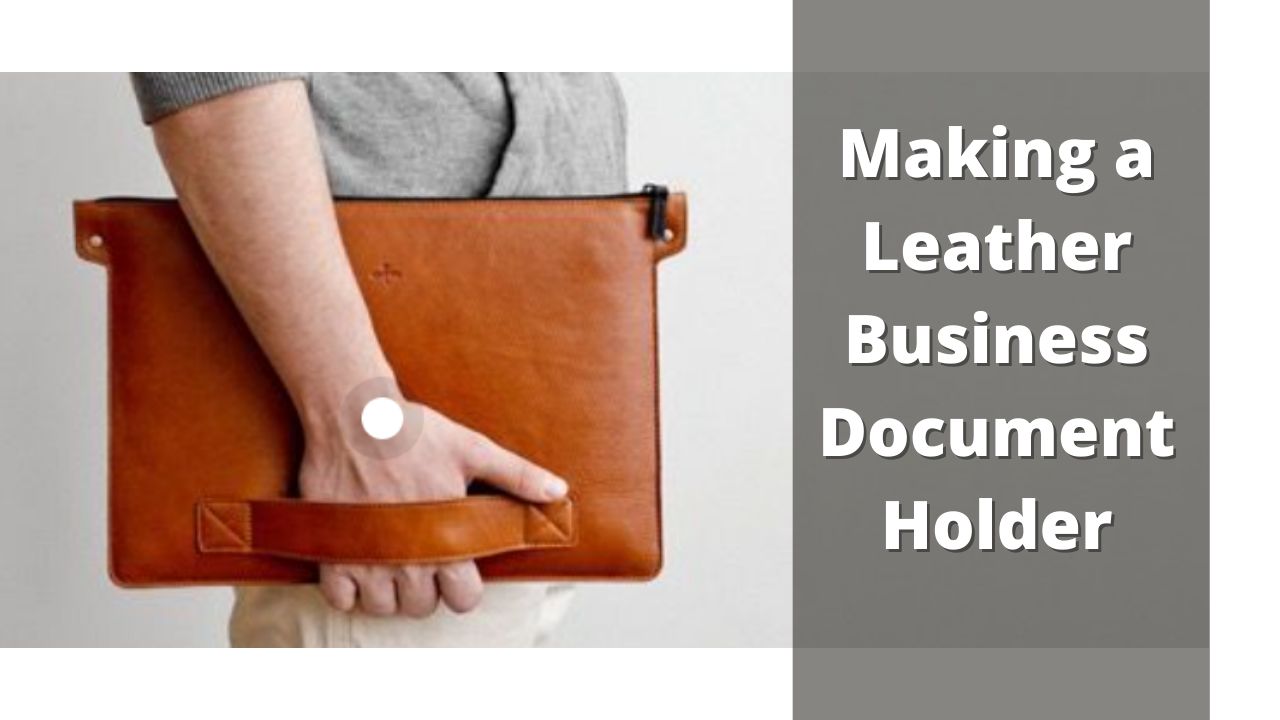When you want to turn your interest in leather fused with fashion into something profitable, building a business is the way to go. But that is easier said than done. Here I am sharing the research I did on the ins and outs of starting your own leather garment business, from the first step of careful planning and analysis to the last step.
How to start your leather garment business? You should have a concrete business plan which includes determining your target market, identifying business expenses, and knowing your product price. You should also know the legal formalities, accounting and bookkeeping, have insurance, and study promotional strategies.
In this article, I will talk about all the things a person needs to know in starting a leather garment business, from start-up costs to making a name for your business. I also provided some tips on how a new leatherworker can start their leather business.
Having a Concrete Business Plan
A business plan is the first step in your leather garment business. It is a written document that serves as your roadmap of how you will execute your start-up business from finances, to marketing and down to the actual business operations.
Determine Your Target Market
The target market for a leather garment business is small since it focuses on leather garments common across all ages. Standard leather products for males and females are caps, jackets, shoes, belts, vests, boots, coats, pants, and gloves. Production can start once you’ve determined your target customers.
Identify Business Expenses
Expenses for starting a business may be divided into three. Equipment and raw materials, land, and building, and hiring manpower.
Expenses in purchasing equipment and raw materials may vary on the business owner’s budget. You may use a basic flatbed home sewing machine for producing a few leather garment items for starters with a tight budget. This costs $130-300.
Sewing machines for specific leather garment-making tasks are purchased if you are producing a large number of products. Some common sewing machines needed are listed. A flatbed lockstitch costs $2,674, and a double-needle flatbed machine is
$4,011. Another set of lockstitch machines are the cylinder bed lockstitch which is $2,406, and a post bed lockstitch that costs $1,337. You will also need the zigzag stitch ($935),
strap cutter ($267), high-speed single thread chain stitch ($521), and a button Stitch ($508).
Other essential equipment and materials are the skiving machine ($534), clicking press ($5,348), and leatherworking tools. Tools may include but are not limited to leather knives and cutters, punches and pricking irons, awls, bevelers, and mallets. These may cost up to $802.
The raw materials needed are different types of leather which may cost up to $150,421; zipper, buttons, thread, and other accessories that cost $12,033; and fabric costing $27,075.
For the land and building for your physical store, buying a single-story building ranges from $238-$286 per square foot in the US area. If you are on the lease term, it will cost $23 per square foot for a store in a famous shopping center near a busy highway.
As for the manpower, it is an optional expense depending if you ought to hire or do business on your own. Two skilled leatherworkers are recommended if you are producing a small number of garments. Their labor pay may cost up to $1,203 / month for each leatherworker.
Office staff such as an accountant charges $80 / month, and a manager or designer needs a $267 / month payment. However, you may not need them if you decided to do the task yourself as the business owner.
Price Range of Products
You should consider a few things when pricing your products. The first is, to sum up all the expenses in making the garment. Compute the cost of raw materials used like leather, thread, and accessories. The equipment used in the production is a long-term investment and cost of use will not be computed per product made. Return of investment for these may not be realized immediately.
Next is the labor pay. Consider the amount of time it takes to finish a product. Hard-to-make leather garments usually take a lot of time and may result in a higher product price. The selling price must not be less than the production expenses.
For your reference, here is the typical price range for leather garments. Men and women leather jackets range from $30-$300. Belts cost around $10-$70 while pants range from $15-$120. Shoes and boots, which are very common leather products, are from $20-$100.
Knowing and Following the Legal Formalities
Any business, small or big, needs to undergo legal processes to ensure that no laws are violated and that your business is on the right track. These are the legalities covering the US area.
Pick a name for your business. Search the internet to make sure that no other business has the same name as yours. Two businesses cannot have the same name to be registered.
Choose a business entity from sole proprietorship, partnership or company. This determines where and how you will file the needed papers. The simplest and most common business structure is the sole proprietorship. It is run by a single individual responsible for all business assets, profits, and liabilities. In most states, this entity is not required to register with the country. But if you’ll be running your business using a different name aside from your common name, you’ll need to submit a Fictitious Business Name Statement. For example, your name is Jason Blake, and you’ll use Blake Fashion as your business name.
A general partnership is an entity with two or more people owning the business together. General partnership agreements may be recorded at the county recorder’s office where the business is located. File a statement of partnership authority with the Secretary of State and Certificate of Assumed Name if operating under another name.
If you are starting a company, there are numerous legalities to accomplish. You need to register with the state, file Articles of Organization, and Certificate of assumed name if operating under another name. Some cities may require you to register your business, such as San Francisco, San Jose, Los Angeles, and Santa Monica.
You’ll need a Federal Employee ID Number (FEIN) for your employees. Next is to obtain a Garment/ Apparel Registration Certificate for brand owners or businesses hiring contractors to make garments. Have this before actually engaging in the garment business.
Lastly, acquire a Seller’s Permit or Certificate of authority if you are selling taxable goods.
Small business owners spend about $1,000 to $5,000 per year on these legal fees.
Keep Track of Finances: Accounting and Bookkeeping
All the money coming in and going out, starting from the expenses in production to the profit of each product sold, should be monitored to ensure transparency. It is also to know if your business is going well or leading to bankruptcy.
Record accurate expenses for the month. This includes operational expenses such as cost of goods sold, payment for online money transfers when a customer pays online, shipping cost, and advertising such as Facebook or Google ads and social media advertising.
Also included in the record are the capital expenses. These are fixed assets such as buildings, land, and machines. Last is the overhead expenses that cover the rent, if the building and land are not owned, insurance, and utilities.
Create a spreadsheet to record and monitor sales for the month. The record includes a product list, the number of products sold, the cost for each product, and the total sales for the month.
The final step is to compute the profit by creating a spreadsheet to monitor the expenses and revenues for the whole month. List down the overall expenses for the products sold and the total sales. Subtract the total expenses to the total sales to get the profit for the month.
Being Covered in a Business Insurance
Get covered in unexpected events and emergencies with these insurances. If you plan to hire employees, health and worker’s compensation insurance is needed. Business insurance and public liability are needed by default as a business owner.
Business Insurance is used in case of fire, flood, or sandstorms. It covers replacement damaged things or finds you an alternative location. This insurance costs $84/ month.
You would need Health insurance if you plan to hire employees. As a business owner, you need to take care of them if they become ill. It costs around $440/ month.
Worker’s Compensation Insurance covers employees when they get injured during work. It provides wage replacement and medical benefits, which costs $86/ month. This is an optional insurance if you are not hiring employees.
Public Liability insurance covers you if there are injury or property damages claims made against your business. This costs $53/ month.
Reaching your Target Customers through Promotions
Creative promotions that touch curiosity and appeal to the mass are a way to reach your potential customers.
Think out of the box. The business name should be something unique and can be well remembered. It involves your branding or what your products are known for. Make use of market positioning. It is influencing your customers’ perception and establishing the image or identity of the brand. For example, leathers are positioned to be classic and durable; thus, products will come out as long-lasting pieces and incur higher selling prices.
Use the online and social media platforms. Create online content about your products using photography and videos. Be discovered in social media by providing that instagrammable shot that consumers love. Be fun, interactive, and unique.
Build a website to monitor everything online, from cash transfers to the use of credit cards. Use E-commerce websites like Shopify and Amazon for a bigger market to discover your products.
Search through hashtags to know the most popular and purchased leather garment fashion. The trends in social media will give you ideas about the products that sell well to people.
Be Your Own Boss: Tips in Starting a Business for New Leatherworkers
If you think only experienced leatherworkers can start their business, think again. Newbies in leathercraft also can improve in this field and be successful business owners in the long run.
Know your craft. Learn and try to improve your leatherworking skills to be able to decide matters in your business.
Improve and master one skill at a time. For starting business owners, you may be overwhelmed with the things that need to be learned. Seek help from other experts and focus on one skill at a time. You’ll learn things through experience over time.
Be the best choice for the product you offer. There is no need to produce a ton of garment designs to appeal to customers as this may cause a low-quality production. You can focus on a few products first and offer the best version of them in the market.
Interest and passion play a big part in starting your business. If you love what you do, you’ll never work a day in your life. If leathercraft is what you love, it will be easier to learn and master it. You’ll treat your business as doing your hobby and will never get tired of it. You will still pursue the business even after many setbacks.
Conclusion
Starting a business may be a handful to handle if you don’t know where to start. As someone who is new in the business industry or in leatherwork, you must be mindful of all the legalities and things to prepare prior to your business opening. Study and apply all these information and rest assured that the next steps would be more manageable for you in pursuing your passion and love for leather.















